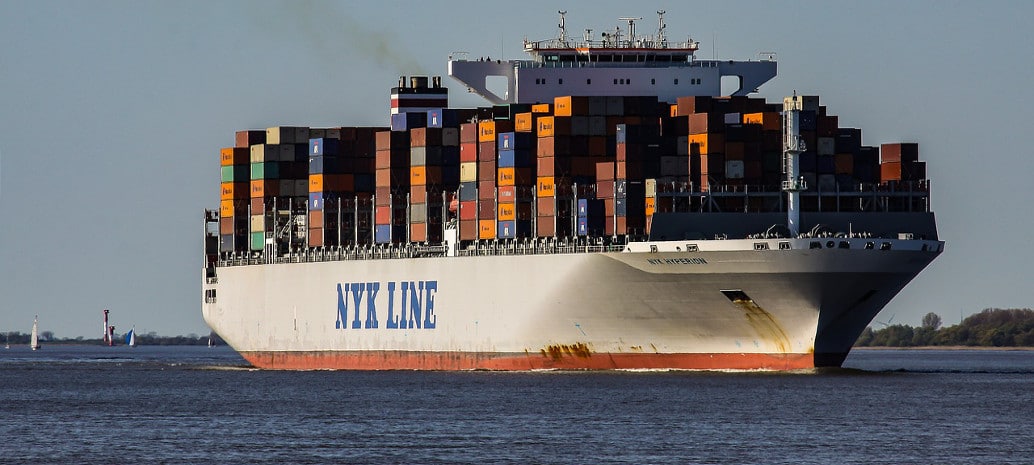By Madison Freeman*
 The U.S. solar industry is anxiously awaiting the Trump administration’s decision on whether to impose sweeping tariffs on solar imports, which could decimate domestic deployment of solar energy and risk damaging the U.S. position in a rapidly growing international market.
The U.S. solar industry is anxiously awaiting the Trump administration’s decision on whether to impose sweeping tariffs on solar imports, which could decimate domestic deployment of solar energy and risk damaging the U.S. position in a rapidly growing international market.
Last month, the International Trade Commission (ITC), the federal agency responsible for investigating and offsetting unfair trade practices, recommended that the White House level tariffs on imported solar panels, triggering a 60-day period for President Trump to make a decision on whether to implement trade remedies. Trump, whose protectionist rhetoric has been a defining feature of his presidency, is expected to issue some form of tariffs in response.
Severe tariffs will threaten the developing U.S. solar industry, which has relied heavily on cheap imports to fuel its recent boom in installations and become the nation’s fastest growing industry in terms of jobs growth. Proponents of trade protections for solar argue that they would allow U.S. solar manufacturing to grow and would be a blow for cheap producers overseas. Though U.S. tariffs would cause some short-term negative impacts in the international solar market, they will merely be a blip in the global growth of solar deployment and will only serve to cut the U.S. out of a promising and rapidly growing arena.
Tariffs pose major risks in the United States and short-term risks abroad
Tariffs pose a clear and immediate threat to the U.S. solar industry. Though imports of cheap solar cells and panels have put many U.S. solar manufacturers out of business, they have been a boon for solar installers and have fueled the dramatic surge in deployment for both residential and utility PV. Tariffs threaten to raise the costs of solar projects, reduce the rate of PV installed nationally, and put installers at risk of shuttering. Facing severe uncertainty, U.S. solar installers have stockpiled panels in advance of the expected tariffs, causing a spike in prices.
U.S. reactions to the threat of tariffs have already caused knock-on effects halfway around the world—India’s nascent but rapidly growing solar industry is reeling from the higher prices of solar panels resulting from hoarding in the United States. Indian solar projects are heavily dependent on cheap imports of Chinese modules, the falling costs of which have spurred the rapid decrease in project costs to some of the lowest in the world in the past few years. The short-term spike in U.S. demand has increased prices of Chinese cells and modules and dampened deployment by many companies whose low project bids were made under the assumption that the decline in prices would continue. Now that the trend has reversed, completion of projects might stall, and some firms could be forced to abandon projects they have secured or begun construction on or face bankruptcy.
In addition to slowing down solar deployment in India, U.S. tariffs also pose a temporary threat for the solar manufacturing industries in Southeast Asian countries—especially Malaysia, Vietnam, and Thailand—which have become major exporters of cheap panels to the United States. The solar industries in these countries have boomed as Chinese companies moved production to circumvent U.S. tariffs on modules produced in China and Taiwan. As the United States now imports the majority of its panels from Southeast Asia, severe tariffs will damage companies in these countries which rely on U.S. demand.
U.S. tariffs will largely benefit other countries long-term
However, these negative international effects will be temporary, and U.S. tariffs will prove a net benefit for other countries.
The price rise phenomenon squeezing Indian installers is temporary. Once tariffs are implemented, U.S. demand will fall, module prices will fall, and India will become a more important market for Chinese manufacturers. In the long term, the U.S. ruling could actually help the Indian solar industry by rebalancing the project market. The breakneck speed with which solar project bids have fallen recently has sparked concerns about the sustainability of these prices and whether they have led to low-quality solar installations as companies rush to complete projects with the cheapest components. By forcing a re-evaluation of project pricing, the uncertainty surrounding the ITC ruling could help discourage a race to the bottom. Additionally, Prime Minister Narendra Modi has set highly ambitious goals for solar deployment as part of India’s Paris agreement terms, and a strong government push will help to secure an expansion of projects in the long term.
Elsewhere, tariffs will provide an opportunity for producers excluded from the ITC ruling—notably, Singapore and Canada—to grow exports by increasing sales to the United States. Both already export some solar components to the United States, and have the capacity to increase this slightly over the next year. Though small, there is potential for the two countries to ramp up production with direct access to the large U.S. market. Increased production from Singapore and Canada could not fully replace the supply from Southeast Asia to the United States, but these producers will have access to a captive market and will be able to charge higher prices to U.S. installers for the same product. U.S. tariffs could ultimately be a boon to the manufacturing industries in both countries.
On the other hand, China will easily weather any reduction in demand from the United States, as demand for solar modules continues to grow elsewhere, especially in the developing world. In the long term, a reduction in U.S. demand will merely depress U.S. participation in a rapidly growing market.
Proponents of tariffs have argued that they will enhance America’s position in the world by encouraging growth in domestic manufacturing of solar modules. This is unlikely to happen, as the four-year time period for tariffs is too short to encourage companies to open manufacturing plants in the United States. With such a brief window of protections, manufacturers, including the two bankrupt companies who filed the case with the ITC, will not be able to recover or to meet U.S. demand for panels. Rather, the tariffs will injure U.S. installation companies and reduce U.S. deployment of solar capacity, while other countries race ahead to harness solar energy.
Solar is now the cheapest and fastest-growing form of energy on the planet. If President Trump imposes severe tariffs, it may damage the ability of the United States to reap solar’s benefits, but it will not derail the remarkable growth of solar deployment globally. The interests of the United States will not be served by imposing trade protections, and the administration should focus instead on other ways to encourage innovation and growth in this space.
*Madison Freeman is the research associate for energy and U.S. foreign policy for the Council on Foreign Relations (CFR) and a fellow with the Clean Energy Leadership Institute.
The views and opinions expressed in this article are the author’s own, and do not necessarily reflect those held by pv magazine.
This content is protected by copyright and may not be reused. If you want to cooperate with us and would like to reuse some of our content, please contact: editors@pv-magazine.com.








By submitting this form you agree to pv magazine using your data for the purposes of publishing your comment.
Your personal data will only be disclosed or otherwise transmitted to third parties for the purposes of spam filtering or if this is necessary for technical maintenance of the website. Any other transfer to third parties will not take place unless this is justified on the basis of applicable data protection regulations or if pv magazine is legally obliged to do so.
You may revoke this consent at any time with effect for the future, in which case your personal data will be deleted immediately. Otherwise, your data will be deleted if pv magazine has processed your request or the purpose of data storage is fulfilled.
Further information on data privacy can be found in our Data Protection Policy.